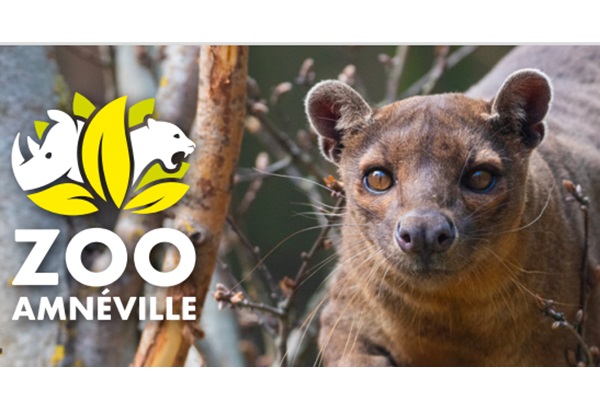 Credit: Zoo Amnéville
Credit: Zoo Amnéville
On Tuesday 2 July 2024, The Amnéville Zoological Park (Zoo Amnéville), one of the major zoos closest to Luxembourg, announced that several new animals have arrived since the beginning of the year.
Zoo Amnéville noted it is participating in the conservation of vulnerable species and species in danger of extinction according to the Red List of the IUCN (International Union for Conservation of Nature) and according to the Washington Convention on International Trade in Endangered Species of Wild Fauna and Flora (CITES), it has recorded more than 200 births of rare species over the past three years.
On the side of the African plain, one of the largest bovids in Africa has arrived: the roan antelope. A group composed of three females and one male will live together with giraffes, zebras, ostriches, crowned cranes and waterbucks. Both sexes have horns, but they are larger in males.
Smaller, but considered the largest carnivore on its island, the fossa, native to Madagascar has been visible in its outdoor space for several days. In the natural environment, fossas (similar to small cougars) live in forests, which is why little Reno particularly appreciates the vegetation present in his enclosure. The fossa is a solitary and rather nocturnal animal. It can be observed frolicking and rubbing against the many branches arranged in its enclosure or napping in its interior space.
In a darker, wetter corner of the zoo, Josy, a Mississippi alligator has joined the many species in the vivarium. The female cohabits in her pool with a snapping turtle, itself native to North America. Observing Josy is simple, as she loves to position herself in front of the window as close as possible to the visitors.
Just before the checkouts, there is an enclosure with two new additions: the Bengal cats. Tamed nearly 5,500 years ago in China, hybridisations with domestic cats resulted in the Bengal breed. This cat is active mainly at dusk and at night. Very agile, it climbs easily in the vegetation where it lives.
The black lory joined the group of rainbow lorikeets in March. These birds live mainly in pairs. However, it is not uncommon to observe them living in groups of around ten individuals. Despite their colouration, they camouflage relatively well in dense vegetation when calm, according to Zoo Amnéville.
Finally, at the “Ailes du Monde”(wings of the world) aviary, two new species have recently arrived: baby yellow-billed storks and cattle egrets.
Apart from new species, new individuals have also arrived in recent months, such as: Bàalam, a young two-year-old male jaguar that joined the female Ria in April; Elisabeth, a female sharing a living space with the male Speedy; Rania and Kiara a female sand cat and a female caracal currently sharing their enclosure with two males, Samir and Kovu. To further complete the African plain, two zebras, Ilou and Tonnerre, joined the already existing group.
In the coming weeks, more new species may arrive. Among them are the European otter, the leopard chameleon and many others, Zoo Amnéville teased.








